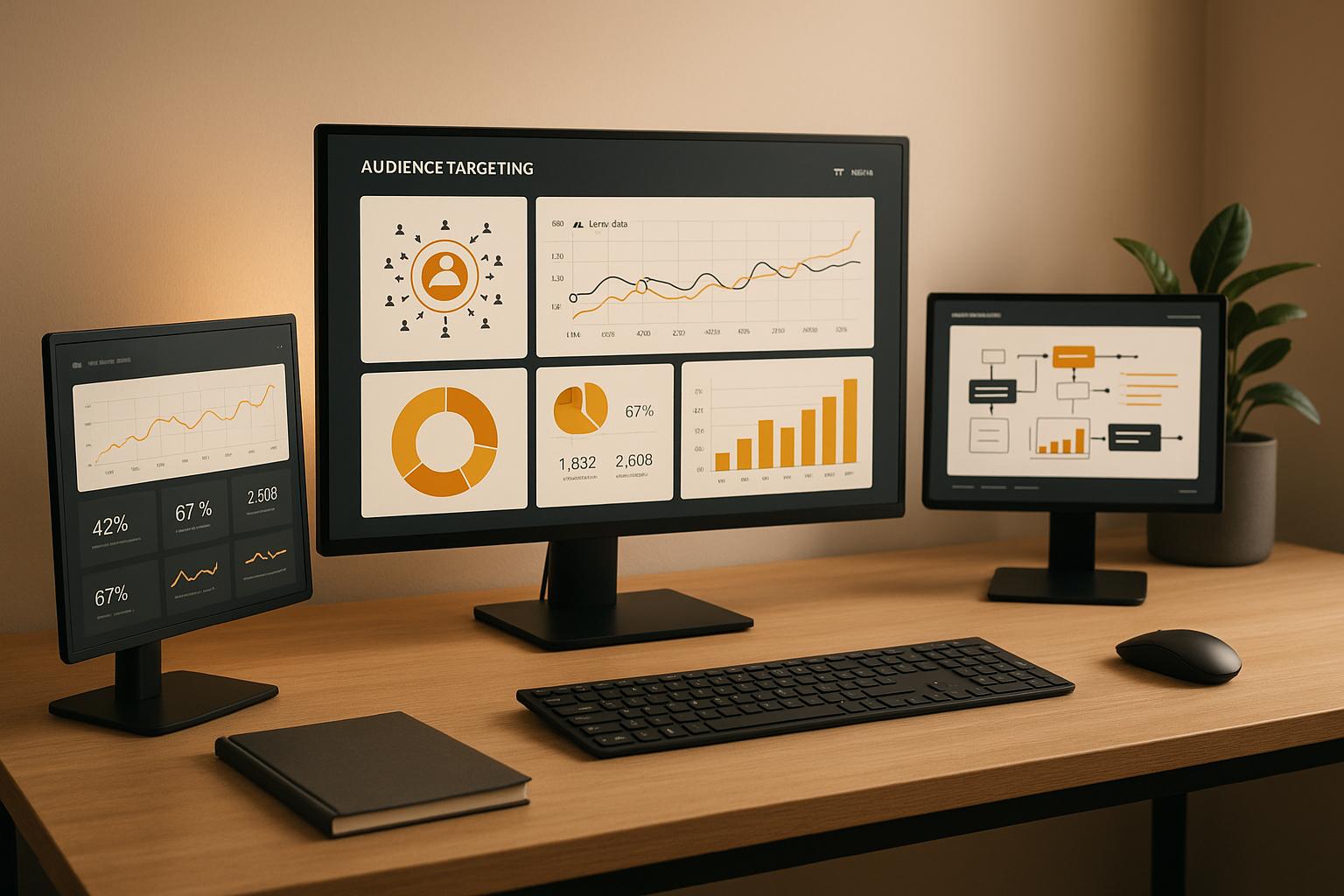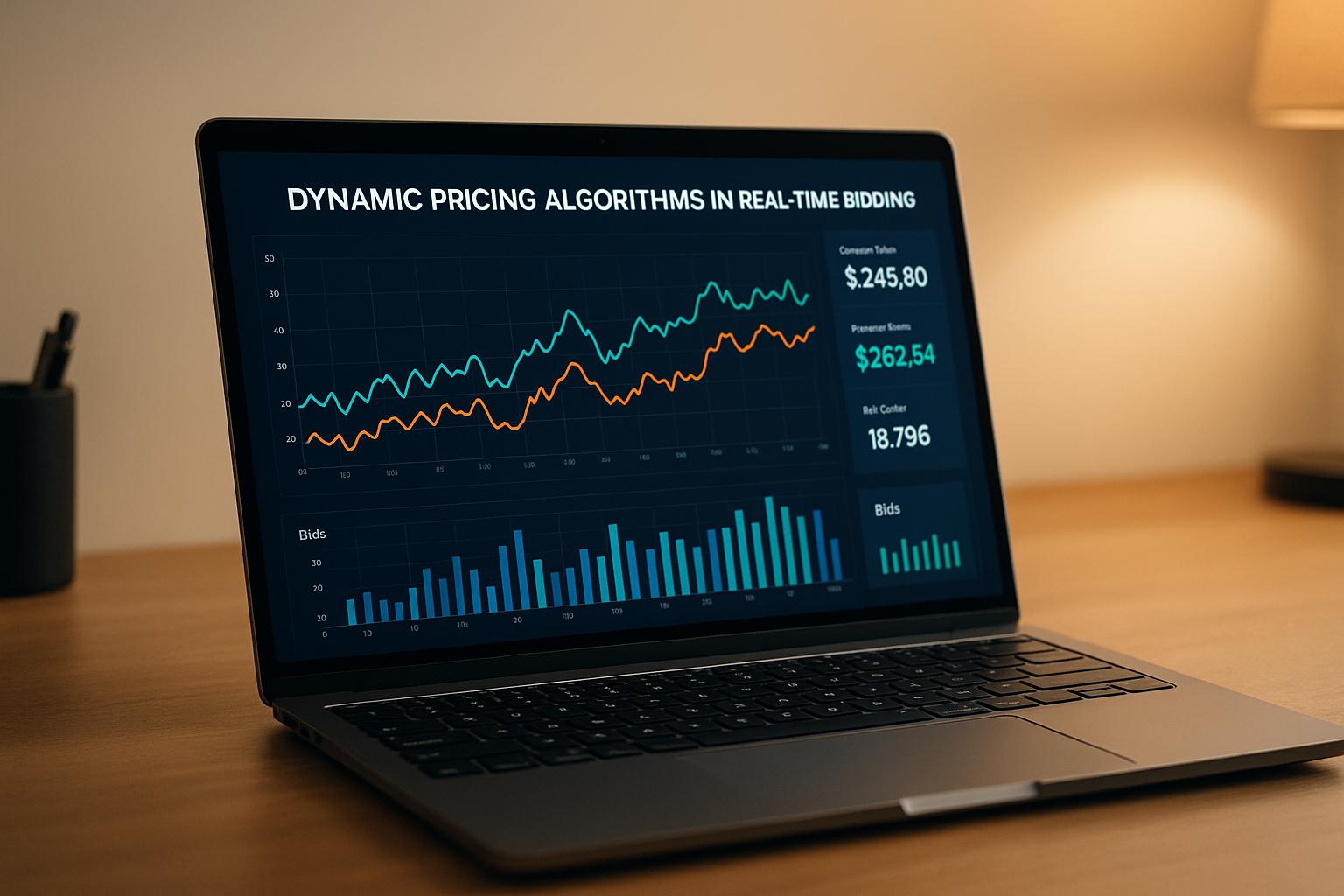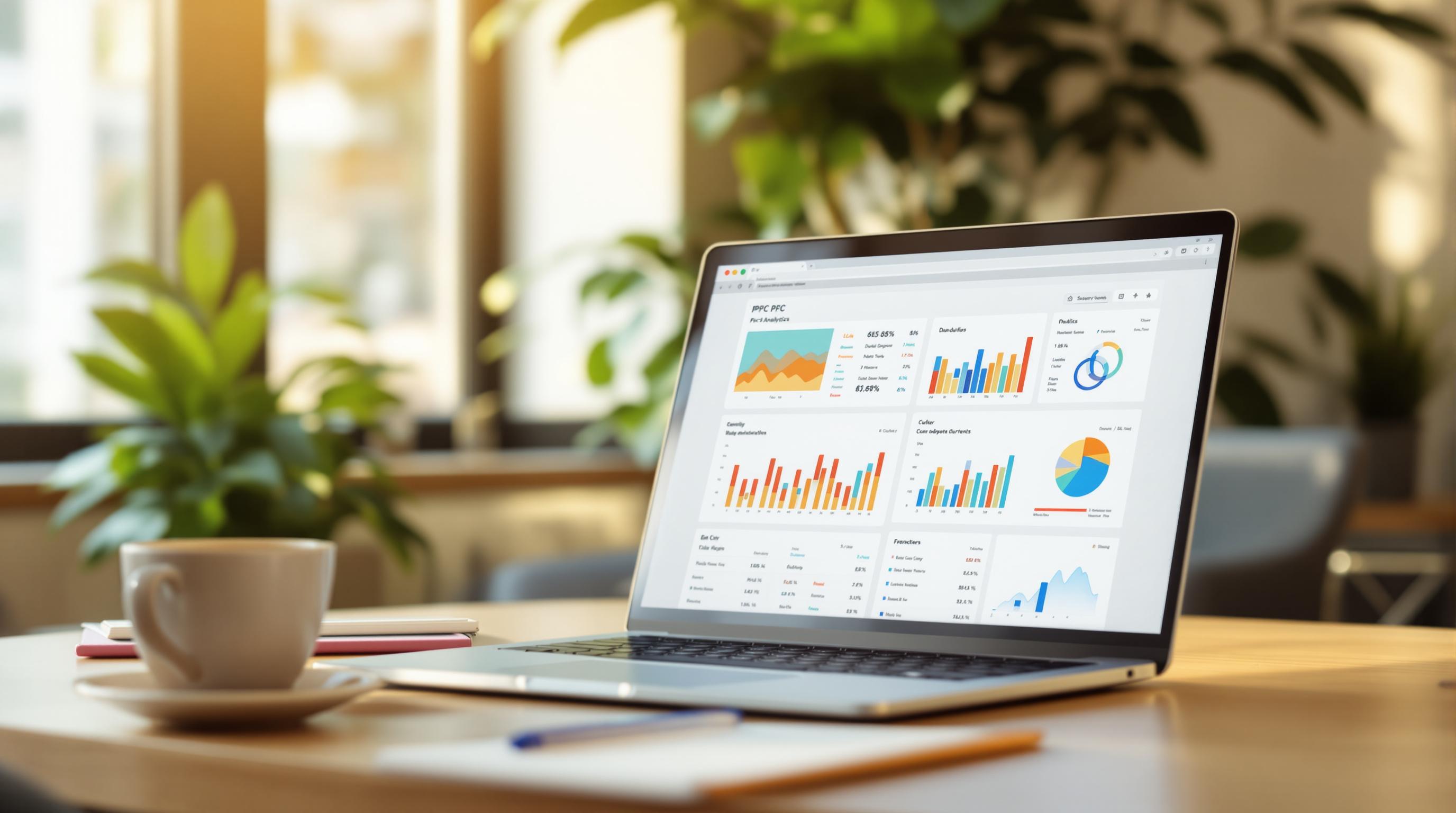- Google Ads: Best for targeting active buyers with high purchase intent using keyword-based search ads. Average CPC: $2.69 (search), ROI: 800%.
- Facebook Ads: Ideal for building brand awareness and targeting users based on demographics and interests. Median CPC: $0.54, massive audience of 3 billion monthly users.
Quick Comparison:
| Feature | Google Ads | Facebook Ads |
|---|---|---|
| Targeting | Keywords & Search Intent | Demographics & Interests |
| Ad Formats | Text-based, Shopping Ads | Highly Visual Ads |
| Audience | Search Volume Based | Interest-Based |
| Average CPC | $2.69 (Search), $0.63 (Display) | $0.54 |
| Best For | Active Buyers, Direct Sales | Brand Awareness, Engagement |
Key Takeaways:
- Use Google Ads for direct sales and high-intent searches.
- Leverage Facebook Ads for audience growth and retargeting.
- Allocate budgets based on goals: lead generation, sales, or brand awareness.
- Test strategies and adjust budgets based on performance metrics like CPA, ROAS, and CTR.
Let’s dive deeper into how to balance your ad spend effectively.
Google Ads vs Facebook Ads in 2024: Where Should You Invest Your Advertising Budget?
Core Platform Differences
Let’s dive into how the fundamental design of Google Ads and Facebook Ads shapes your targeting strategy. Each platform operates on distinct principles, tailored to different user behaviors and marketing goals.
Main Features Comparison
Google Ads focuses on tapping into active search intent using keyword targeting. With over 40,000 searches happening every second , it’s built to connect with users actively looking for specific products or services. The platform primarily offers text-based search ads and shopping listings.
Facebook Ads, on the other hand, taps into its massive user base of more than three billion monthly active users by leveraging detailed audience data. It excels at targeting users based on demographics, interests, and online activity, making it ideal for precision audience segmentation.
| Targeting Capability | Google Ads | Facebook Ads |
|---|---|---|
| Primary Focus | Keywords & Search Intent | Demographics & Interests |
| Ad Format | Mainly Text-based | Highly Visual |
| Audience Reach | Search Volume Based | Interest-Based |
These differences create unique opportunities to engage users, depending on their behavior and intent.
User Intent and Behavior
Google Ads works best when users are actively searching for something specific. For example, someone searching "buy running shoes" signals a clear buying intent . This makes it a go-to platform for capturing direct interest.
Facebook Ads, in contrast, targets users during casual browsing. It’s designed to spark interest in products or services they may not have actively considered .
Pricing and Market Competition
The cost structures of these platforms vary significantly, influencing how you allocate your ad budget.
Google Ads Pricing (March 2023 data) :
- Average CPC for search ads: $2.69
- Average CPC for display ads: $0.63
- Average conversion rate for search ads: 2.81%
Facebook Ads Metrics (March 2023) :
- Median CPC: $0.40
- Median CTR: 1.49%
- Median CPM: $5.61
Industry-specific trends also play a role. For instance, legal services on Google Ads face a high CPC of $6.75, while e-commerce campaigns enjoy a lower CPC of $1.16 . Additionally, during peak holiday seasons, Google Ads often sees a rise in CPCs due to increased competition .
Understanding these differences helps you tailor your approach to each platform’s strengths and cost dynamics.
Budget Planning Essentials
Allocating your budget between Google Ads and Facebook Ads requires aligning your spending with three key factors: your marketing goals, audience traits, and your position in the market.
Marketing Goals
Your business objectives play a huge role in deciding how to divide your budget. For lead generation, focus on non-brand search and Performance Max campaigns on Google, paired with Facebook retargeting. For online sales, combine Google search and remarketing efforts with Facebook's social engagement tools. If brand awareness is your goal, lean on Facebook's reach campaigns alongside Google's display and YouTube ads. A well-rounded strategy often pairs bottom-of-the-funnel actions on Google with top-to-mid-funnel campaigns on Facebook.
"If you haven't taken the time to create a strong foundation of targeted audiences, dynamic ad copy/creative and precise ad placement, then no, you won't generate more leads by simply throwing more money at your campaign." - Rachel Bills, Intuitive
Audience Characteristics
Facebook's massive user base offers excellent options for demographic targeting. This allows for detailed audience segmentation, which can improve click-through rates by over 200% and boost on-page conversions by 30%.
Market Position
Your competitive landscape should also influence your budget. Here's some recent Facebook Ads performance data to consider:
- Median monthly spend: $1,592.31
- Median cost-per-click (CPC): $0.54
- Median monthly purchases: 47
"People get in trouble when they try to increase too much too quickly. Facebook Ads can scale well when the increases are done strategically. It's best to test and scale slowly, increase your budget by 25% at most, allow a few days for results to come in, and then scale again if desired. Increasing too quickly can cause the ads not to scale because the algorithm needed more time to learn about the ad's performance." - Rachel Lindteigen, Etched Marketing
Seasonal trends and competitive factors should also guide your budget decisions. During peak periods or special promotions, adjusting your budget can help you tap into increased market activity. Keep an eye on key performance metrics and make adjustments based on actual data, not assumptions. These considerations will help you create a budget plan that aligns with your goals and market conditions.
sbb-itb-89b8f36
Budget Distribution Methods
To achieve campaign success, aligning your budget distribution with your marketing goals and audience insights is crucial. There are three main ways to allocate your budget: fixed percentage splits, performance-based adjustments, and ongoing testing.
Fixed Percentage Split
Studies indicate that businesses often allocate 35% more to Google Ads than Facebook Ads, leveraging each platform's strengths . For direct sales, prioritize Google Ads. For brand awareness, focus more on Facebook Ads. If lead generation is your goal, a balanced approach may work best. Keep in mind, fixed allocations aren't set in stone - adjust based on how your campaigns perform.
Results-Based Division
Instead of sticking to predetermined splits, base your spending on performance metrics. For instance, data reveals that businesses earn $8 in profit for every dollar spent on Google Ads, while Facebook remains a top performer for ROI across paid channels . Key metrics to monitor include:
- Cost Per Acquisition (CPA)
- Return on Ad Spend (ROAS)
- Click-Through Rate (CTR)
- Cost Per Thousand Impressions (CPM)
"If you go into your ads with a testing strategy - no matter your industry - it will resolve at least 80% of your problems. The other 20% are probably just making sure you have the right strategies specific to your niche or industry in terms of what you're advertising, such as your offer." - Tara Zirker
Testing and Adjustment
Continuous testing is essential for refining budget allocation. Set aside 10-25% of your ad budget specifically for testing. For Facebook campaigns, try testing 4-6 creative sets and rotate ads every 5-7 days to uncover what works best. Automated tools can improve budget efficiency by 15-35%, while starting with smaller budgets - like the median monthly spends of $1,057.45 for Google Ads and $784.33 for Facebook Ads - allows for gradual improvements .
Campaign Management Across Platforms
Multi-Platform Tracking
Tracking performance across platforms like Google Ads and Facebook requires careful attention to data. Google Analytics 4 (GA4) is a powerful tool for monitoring how your campaigns perform. To get the most out of it, make sure you're using UTM parameters for all your Facebook ads. This helps you accurately track where traffic is coming from and measure results in GA4 .
Key steps to take:
- Install the Meta Pixel to track Facebook activity.
- Use consistent UTM parameters for all campaigns.
- Set up custom conversions in GA4 that align with your Facebook goals.
- Understand how attribution works differently on each platform.
Keep in mind, tracking differences are normal. Google Analytics relies on cookies for single-device tracking, while Facebook tracks users across multiple devices . These differences can impact how conversions are reported. Still, a well-organized tracking setup lays the groundwork for effective retargeting.
Audience Retargeting
Retargeting across platforms can dramatically improve your campaign results. In fact, retargeted ads can achieve click-through rates up to 10x higher than standard display ads . Successful brands use retargeting to re-engage potential customers who didn’t convert on their first visit.
As LeadsBridge puts it:
"Visitors rarely buy the first time they visit your site."
For example, Madewell uses dynamic ads to show products based on browsing history, while Airbnb highlights properties users previously searched for . To make the most of retargeting on both Google and Facebook, consider these strategies:
| Platform | Retargeting Strategy | Implementation |
|---|---|---|
| Custom Audiences | Target users based on website visits, engagement, or customer lists | |
| Remarketing Lists | Build lists from site visitors and specific page interactions | |
| Both | Dynamic Ads | Display products or services users have already viewed |
Platform Coordination
Managing campaigns on Google Ads and Facebook requires a coordinated approach. Budget management and performance tracking are key to getting the best results. For example, use shared budgets in Google Ads to distribute spending efficiently across campaigns . On Facebook, leverage projection tools to estimate reach and lead generation potential .
To ensure smooth coordination:
- Track metrics like CPC and CPA for both platforms.
- Use Facebook Audience Insights to refine ad targeting.
- Adjust budgets in real-time based on performance data.
- Align messaging across platforms for a cohesive brand experience.
- Keep branding elements consistent across all campaigns.
Take advantage of GA4's Exploration reports to map out the customer journey from start to finish. This helps you understand how users interact with your ads and move through the conversion funnel, enabling smarter decisions about where to allocate your budget .
PPC Budget Management Tools
Top PPC Marketing Directory

Managing your PPC budget effectively requires the right tools and expertise. The Top PPC Marketing Directory connects businesses with tools designed for campaign management, bid adjustments, and budget tracking across platforms like Google Ads and Facebook Ads. It also highlights solutions for keyword research, ad copy improvements, and performance monitoring to help maximize ROI.
When using directories like this, prioritize providers with a solid track record. For example, Black Propeller, listed in a top directory, helped Microscope Central achieve a 140% boost in ROAS within 90 days and increase sales volume by 45% in just four months .
Budget Tracking Software
Modern budget tracking tools simplify the management of campaigns across multiple platforms. Shape.io, for instance, is a standout option for improving budget oversight. Max Massia, Head of Media at Next&Co, shares his experience:
"We said goodbye to tedious manual checks and gained invaluable peace of mind by letting the system adjust budgets towards one common goal. We reduced pacing-related incidents by 80% and total billing increased by 10%."
Here’s a comparison of some top tools:
| Tool | Key Features | Platform Support |
|---|---|---|
| Adscook | Handles 40M+ monthly ad budgets, automates 500K+ actions | Facebook Ads focused |
| Shape.io | Hourly dashboard updates, bi-directional API | Cross-platform |
| Optmyzr | AI-based projections, automated campaign control | Multi-platform |
| Madgicx | AI bidding, creative generation | Meta Ads specialized |
To get the most out of these tools, look for features like automated budget pacing and overspend protection. Google Ads' Performance Planner can help set the right budget levels , while platforms like Adscook offer real-time dashboards to monitor results and uncover performance issues .
Lisa Dauverman from Meta highlights the value of third-party tools:
"Meta will always just go to a certain level and we need partners like Madgicx."
Key features to prioritize in budget management software include:
- Cross-platform reporting
- Automated budget pacing
- AI-based spend projections
- Real-time performance tracking
- Overspend protection
These tools reduce manual effort while ensuring efficient budget allocation. For example, Adscook currently manages over 25,000 ad accounts and automates 500,000+ actions monthly , showcasing how automation can scale and optimize budget management across platforms.
Conclusion
Based on the platform comparisons and budget strategies discussed earlier, it's clear that aligning ad strategies with your business goals is key. For instance, Facebook ads remain highly competitive, with a median CPC of $0.54 across industries as of November 2023, and 92% of marketers finding them effective for driving sales .
Understanding the strengths of each platform can help shape your initial budget allocation. This highlights the importance of a flexible budget strategy, as described in our earlier methods . Testing plays a big role in fine-tuning campaigns and improving results.
Experts recommend setting aside 10-20% of your budget for testing and optimization . This includes activities like A/B testing, refining keywords, and adjusting bid strategies. Use platform-specific tools and analytics to make smarter budget decisions and stay adaptable.
Keri Lindenmuth from KDG offers some practical advice:
"Ads are a great way to grow engagement but don't forget about ensuring your sales team meets the same high quality. Of course, this applies primarily to B2B companies and B2Cs with high-price items. But the point stands for other products, too."
Success requires constant monitoring, data analysis, and adjustments. By leveraging the unique features of each platform alongside robust tracking tools and regular optimizations, businesses can get the most out of their ad spend on both Google Ads and Facebook Ads. Keep refining your strategy based on performance data to stay ahead.


